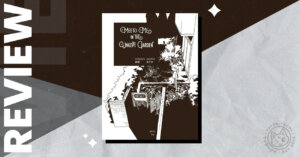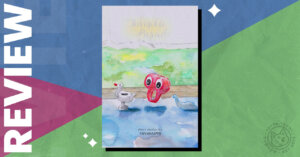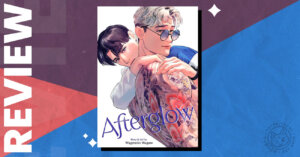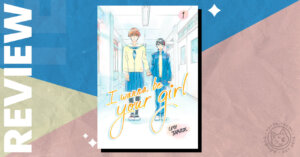The premise of Hikaru Nakamura’s Saint Young Men is very simple: after doing a good job for a millennia, Jesus and Buddha take some time off. Assuming the form of 20-somethings and moving into a rundown apartment together, they try to experience as much of what Japan has to offer as they can, all while concealing their identities and avoiding temptations.
This premise is primarily what kept it out of translation for so long. Apparently, Nakamura was worried that it would cause controversy with American Christians, and to avoid that she simply wouldn’t let it be translated. Saint Young Men has stewed in its own hype for over 10 years now. Is it as taboo as Nakamura seemed to think? Was it worth the wait?
The Adequate
Nakamura’s art is… fine. It has a kind of sketchy quality that gives it a 4-panel gag manga vibe, although it’s more detailed than your average 4-panel strip. It mostly just gets the job done, with some standout facial expressions.
If I had to complain about anything, it would be some weird screentone use. There’s this one style of screentone Nakamura sometimes uses on character’s skin that’s made up of small circular groups of dots. She tends to use it when there’s a shadow across the character, but it ends up making it look like that character has a severe rash. This is a super nitpicky complaint but it does look odd, especially when more solid screen tones are used just a page or two away to accomplish the same thing.

I briefly wondered if it was an artifact of digitization that would have looked better on paper. However, the rest of the release looks great from a quality control perspective, so I think it’s just an unusual choice.
The Good
In fact, basically, everything about the release quality is great. For a series that’s known for the density of its puns and references, the translation, courtesy of twin team Alethea and Athena Nibley, read incredibly smooth. Jokes are adapted very naturally, and the margins aren’t clogged up with translation notes. There are translation notes at the end, though – ten whole pages of them. I know some people would prefer not to have to flip back and forth, but personally, I had no issue with it. The majority of the notes explain obscure religious references rather than untranslatable puns. As someone who grew up in a Catholic family and went to Catholic schools, I rarely had to flip to the back of the book.
The Potentially Controversial

These religious references form the bulk of the humor, and also the bulk of what might keep people from enjoying the book. The jokes tend to fall into one of two categories: observational humor about aspects of religion that often go unquestioned, or manzai-ish comedy duo routines, with Jesus as the funny man to Buddha’s straight man. Both types are never mean-spirited and always funny, although rarely hooting and hollering, rolling on the floor funny. Generally, the laughs were more low key, reminiscent of healing slice of life series (but distinctly lacking cute girls).
The characterization of Jesus in his funny man role is going to be the major sticking point, if there is one, for certain western readers. He’s a little more willing to lie by omission and Google pictures of models than I think many Christians would like to imagine him. I found that hilarious, but if you’re more devout than I ever was you might not.
Another thing worth bringing up is how dated some of the references are. What may have been merely a deep cut in 2008 is positively subterranean now. The one that sticks out to me is the aforementioned model joke, where Jesus admits to looking at pictures of Leah Dizon, an American-born model who was more popular in mid-2000’s Japan than she ever was in her home country. After 11 years, how many people in America are going to even know who she is, much less find the reference funny? I got a certain smug satisfaction out of vaguely remembering her from my own teenage model-Googling years, but I suspect I’m one of few. For non-religious readers, the simple fact that this book is old is going to be the biggest barrier of entry.
The Verdict
More often than not, though, the humor is timeless enough, and the references surface-level enough, that anyone can appreciate them. This book, that could have been a challenge to adapt for a number of reasons, ends up being a joy to read. If you’re up for a little good-natured blasphemy, you can’t go wrong with Saint Young Men.
You can read more about “Saint Young Men” on Anime-Planet and order it through Amazon. Special thank you to Kodansha Comics for giving us the opportunity to review this manga.

Featured Sponsor - JAST
The sweetest romance and the darkest corruption, the biggest titles and the indie darlings; for visual novels and eroge, there's nowhere better.
Big thank you to our supporters
From their continous support, we are able to pay our team for their time and hard work on the site.
We have a Thank-You page dedicated to those who help us continue the work that we’ve been doing.
See our thank you page




